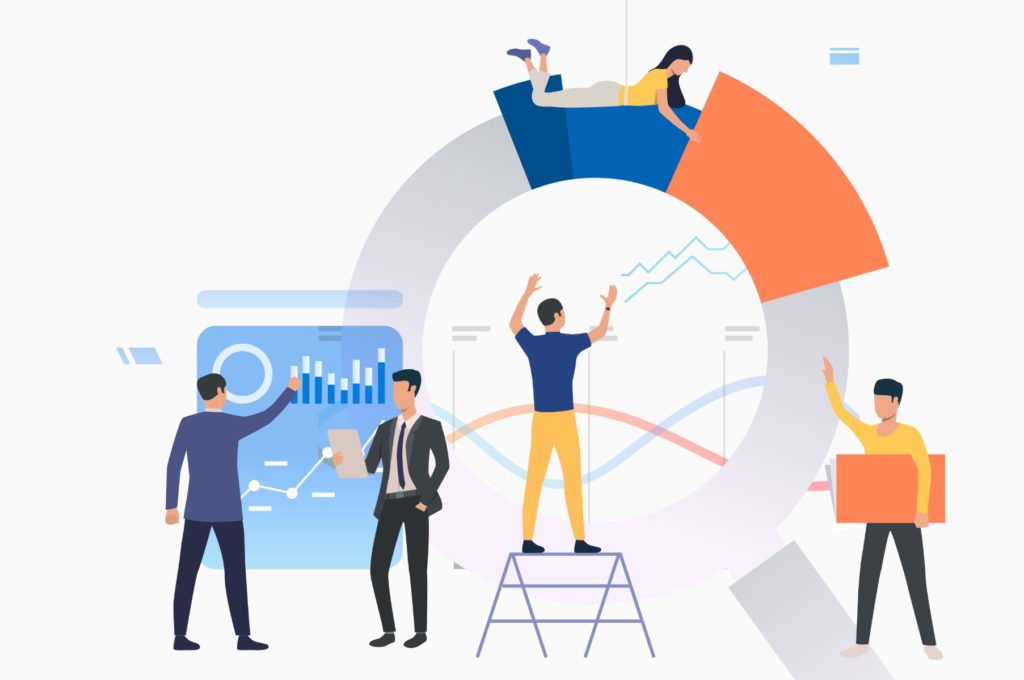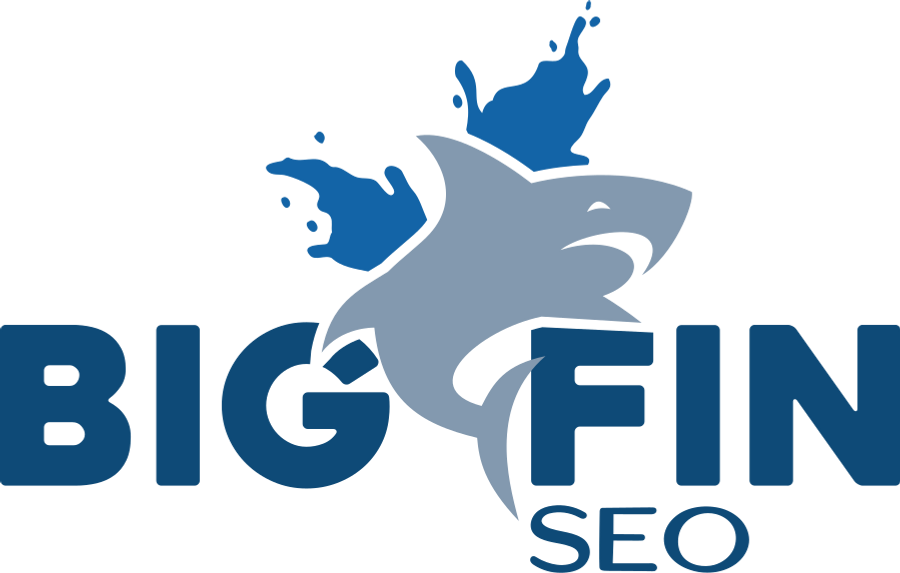Grow Your Business with
Search Engine Optimization (SEO)
SEO is short for search engine optimization. It’s what you do to have your website’s pages appear at the top of organic search results. It involves creating website pages in a way that satisfies keywords typed into a search engine so that users find what they’re looking for.
Google is by far the most popular search engine in the world, using an algorithm with more than 200 ranking factors. SEO experts often refer to Google when speaking about search engines in general. When it comes to Google and optimization, there’s one simple rule to keep in mind – Google wants to provide the best experience to the user.
We help companies improve their online presence by providing a deep understanding and application of SEO best practices using our exclusive 5-step optimization program. Here we provide insights into effective search engine optimization and the services we provide.

SEO Services
To drive organic search results, our search engine optimization services focus on the main pillars of effective SEO which include: Foundational SEO, Keyword Research, Technical SEO, On-Page Optimization, and Off-Page Optimization. By understanding the importance of each of these factors, you’ll gain insight into how Big Fin can help you succeed!
Full SEO Audit
The start of any successful search engine optimization campaign begins with a full site audit. Maybe you tried our SEO Audit tool which provides a cursory glance at key issue and opportunities for improving the visibility of your website.
When evaluating website performance from the perspective of search engines like Google, there are hundreds of factors to consider. Our full site audit looks at website factors both on page and off-page to identify opportunities to improve rankings.
Our audit not only focuses on getting your website aligned with search engine optimization best practices, we also evaluate your competitive set. By knowing the relative strength of your competitor’s website, we know what must happen in order to improve your rankings and garner a larger share of search traffic. Some audits can take as little as 2-3 days (for smaller sites) to a full month for industry-leading websites.
Keyword Research
Most SEO strategies start with keyword research. Big Fin’s SEO pros use tools such as Google Ads, SEMrush, MOZ, and many others to see the value of keywords for our clients.

Deciding on target keywords will shape the pages to be created and optimized. For a given page, we identify a primary keyword and a list of secondary keywords that help flesh out the topic of your page. This is referred to as LSI or latent semantic index. When Google evaluates a webpage, it looks for keywords that relate to other keywords as a clue as to how valuable your page is.
Don’t fall into the trap of trying to rank for the highest-value keywords. It’s smart to have realistic expectations. Your local trophy store won’t rank first for the keyword “trophy,” no matter how hard you try. A company that sells mobile phones may want to rank for “best cell phone,” but a simple Google search will show that the results are mostly lists and reviews of cell phones, not a single product page. Don’t ask, “What terms do we want to rank for?” Instead, ask, “What terms should we rank for?”
Technical SEO
The idea behind technical SEO is that users and search engines shouldn’t have any trouble finding anything on your site. Here’s a list of some parts of technical SEO:
- Page speed: Your web pages should load quickly. Unnecessary code and excessively large images slow down the load time. SEO pros and web developers work closely together to make sure that pages load as fast as possible.
- Sitemaps: All sites should have an HTML sitemap and an XML sitemap. Users can access the HTML sitemap, and it shows an organized list of links to the site’s main pages. In some cases, all site pages are in the HTML sitemap. The XML sitemap is strictly a list of URLs to let search engines know what pages exist on the site.
- Mobile-friendliness: Your website should work just as well on mobile devices and tablets as it does on desktop computers.
- Hidden files: The robots.txt and htaccess files contain some basic instructions for web browsers to use when loading your webpage, with their own set of best practices.
- Duplicate content: Each page should have unique content. If you have pages with the same title, for example, you’re confusing search engines as to which page they should consider ranking. Duplicate meta titles and H1 titles are surprisingly common issues.
- Broken links: Anytime a user clicks a link and doesn’t go to a page, that’s a bad user experience, and search engines will ding you appropriately. A technical audit should identify all 301 redirects and missing pages linked to your site.
On-Page Optimization
Once we have keywords to target, we can create the content for your pages. Antiquated SEO guidelines will tell you to force-feed the keyword into your content as much as possible. In an earlier time, search engines were less sophisticated, and this tactic worked. These days, Google and other search engines don’t fall for that. “Keyword stuffing” has no value. It’s a form of “tricking the search engine.” Don’t try to trick Google. The fundamental guideline is to satisfy the user’s query.
Here are some of the main elements of on-page content:
- URL: the web address for the page
- Meta title: the “official” title of the page, which appears in the tab at the top of a web browser and as the link in search results
- Meta description: a short description of the page, usually 160 characters or less, appearing below the link in search results
- H1 heading: the title as it’s shown within the page, usually in large, bold text
- Body content: the bulk of the page’s offering, usually words, images, buttons, purchasing forms, etc.
- Other headings: headings that separate the content, called H2, H3, H4, etc., based on their size and purpose in the page content, especially useful for long pages that cover a topic deeply
Writing SEO-friendly content can be a tricky proposition for many content writers. Google consistently urges websites to use natural language that speaks to their target audience. Our optimization expert’s keywords strategically appear in the URL, meta title, meta description, H1 heading, and body content. We then use advanced tools to check for overall page optimization in relation to SEO best practices.
Off-Page SEO
Often referred to as “external links” and “off-page SEO,” backlinks are links that go from other sites to your site. Backlinks give Google a big clue into the value and reputation of your site among the rest of the online world. If other sites reference your site and are willing to send users there, your site must be pretty great. Big Fin SEO offers link-building campaigns, as part of our SEO services package.
SEO pros use tools like MOZ and SEMrush to look at all the backlinks your site has. Not all links have equal value. Links from authoritative, high-traffic sites will benefit your SEO much more than those from less reputable sites.
Google has improved its understanding of backlinks greatly in the last ten years. In more primitive times, websites successfully “gamed the system” by having their links placed on sites called “link farms.” These days, Google will easily detect this black hat SEO tactic and likely impose a manual penalty on your site, which is catastrophic to your rankings and a pain to fix.
Tracking SEO Success

One of the most common SEO problems is that businesses don’t know how well it’s working. Even savvy business people are prone to jumping to conclusions when they see changes in their site traffic, revenue, leads, products sold, or new walk-in customers. If you’re serious about SEO, you should know exactly what to track.
One of the most popular and well-reviewed SEO tools we use to provide transparency into our work is SEMrush. Among its many features, SEMrush will track the rank of any individual keyword you add to your campaign. Before you create or update pages, choose what keywords you’re targeting and add them to your tracking. Depending on the website, you may want to check your rank daily, weekly, or monthly, and record the results.
You may have found that the keywords you targeted aren’t the ones actually driving traffic to the site. Google Search Console will show how many impressions and clicks your pages got for individual keywords. If you find a new keyword driving significant traffic, add it to your tracking going forward.
Now that you’re fully informed, it’s time to get started. Big Fin SEO offers different pricing tiers for companies needing help with their search engine optimization services. Select one of our SEO service packages to get started.
Enterprise Plan

$4,799+ /mo
- (Websites with 100+ pages)
- Onboarding Call
- Pre-Intake SEO Audit
- Foundational SEO
- Google My Business
- Keyword Research
- Technical Analysis
- On-page Optimization
- Off-page Optimization
- Content Creation
- Quarterly Pillar Content
- Data Aggregators
- Directory Submissions (50)
- Link Building
- Website Monitoring
- Google Console
- Google My Business Updates
- Weekly Reporting
- Project Manager
- 24/7 Support
Standard Plan

$3,597 /mo
- (Websites with <100 pages)
- Onboarding Call
- Pre-Intake SEO Audit
- Foundational SEO
- Google My Business
- Keyword Research
- Technical Analysis
- On-page Optimization
- Off-page Optimization
- Content Creation
- Data Aggregators
- Directory Submissions (25)
- Link Building
- Monthly Reporting
- Project Manager
Basic Plan

$1,997 /mo
- (Small Business)
- Onboarding Call
- Pre-Intake SEO Audit
- Foundational SEO
- Google My Business
- Keyword Research
- Technical Analysis
- On-page Optimization
- Off-page Optimization
- Monthly Reporting







